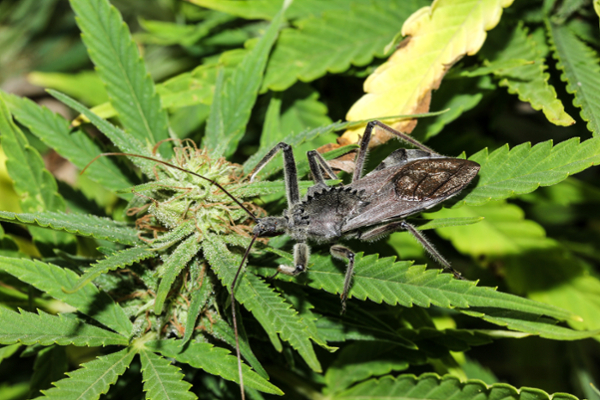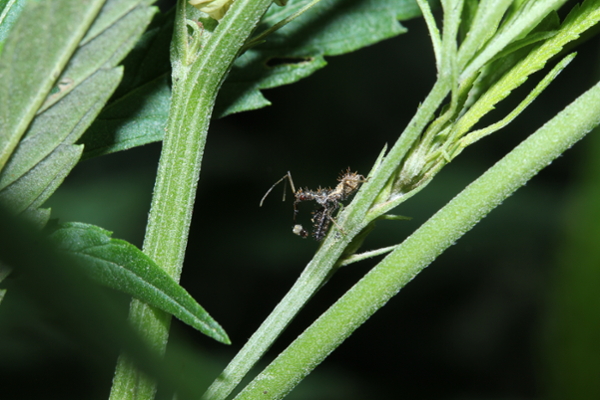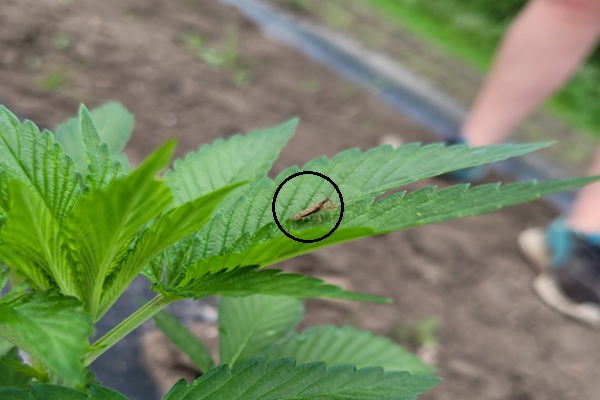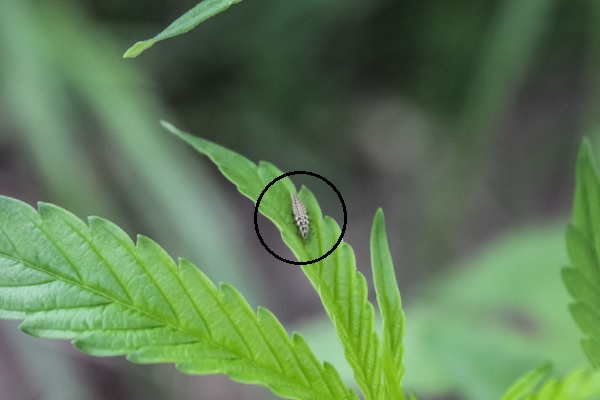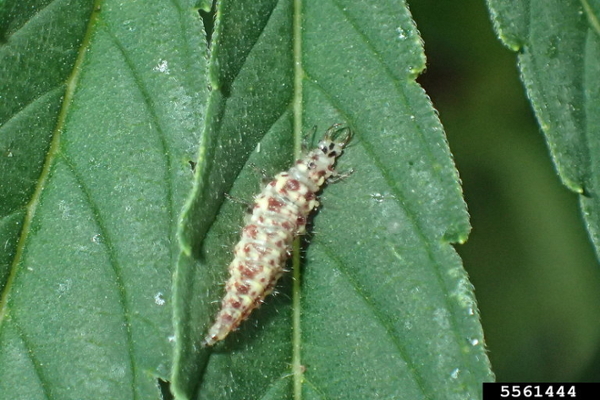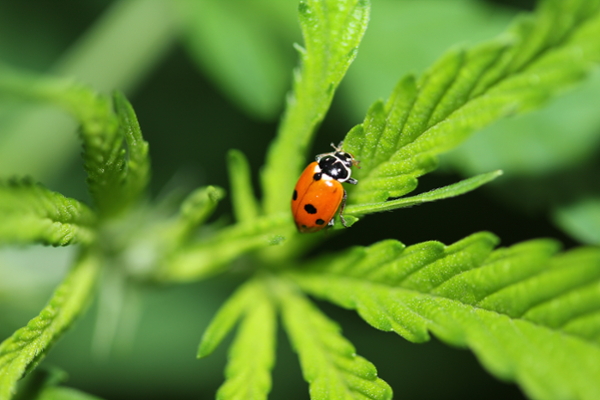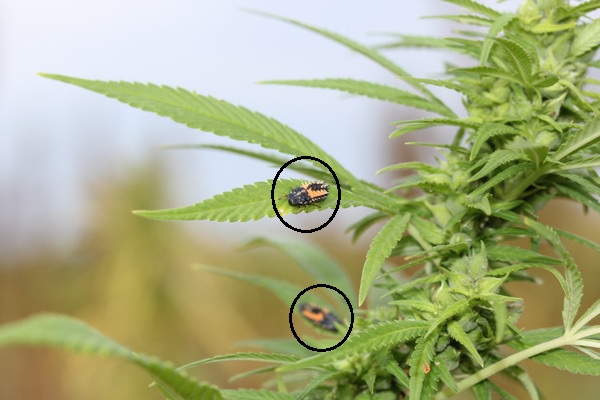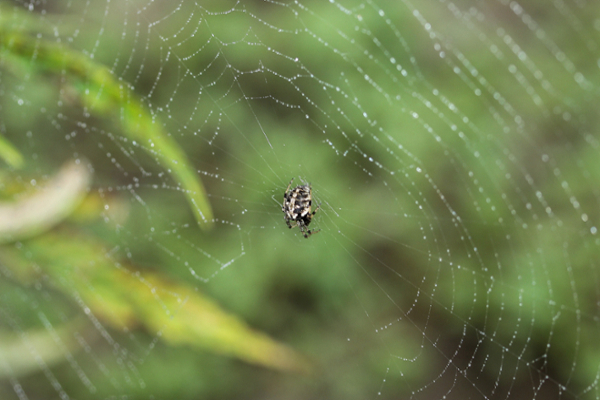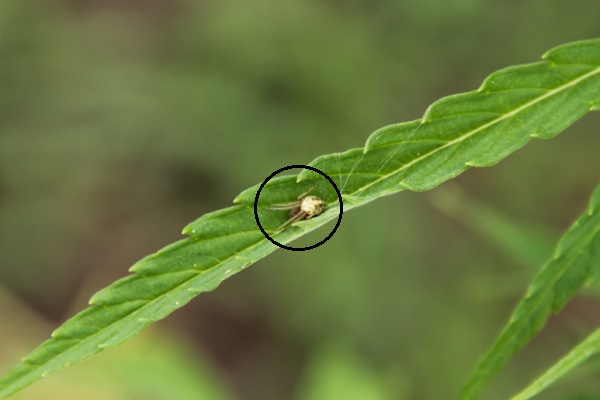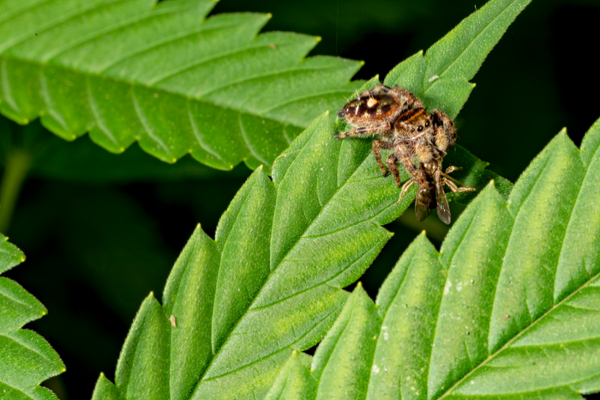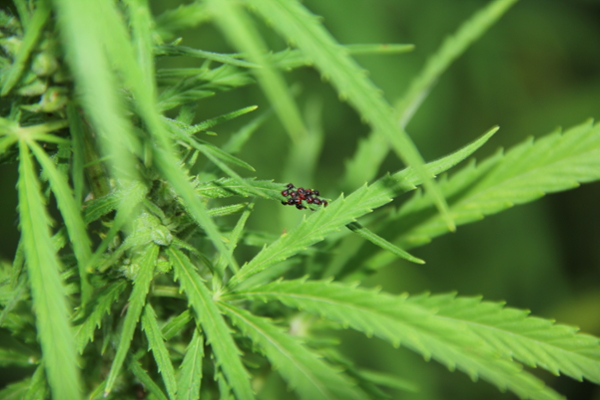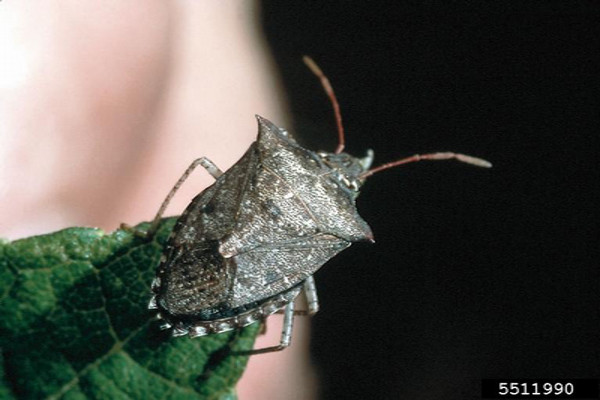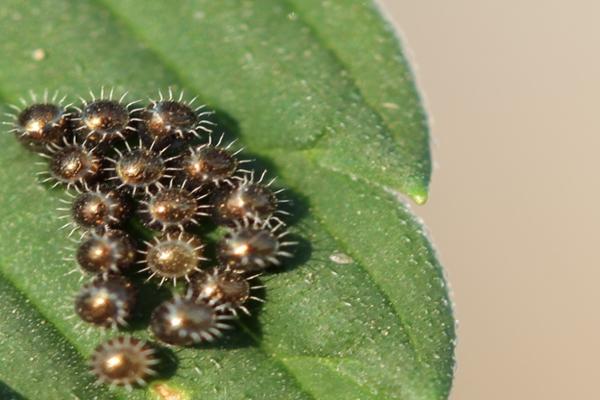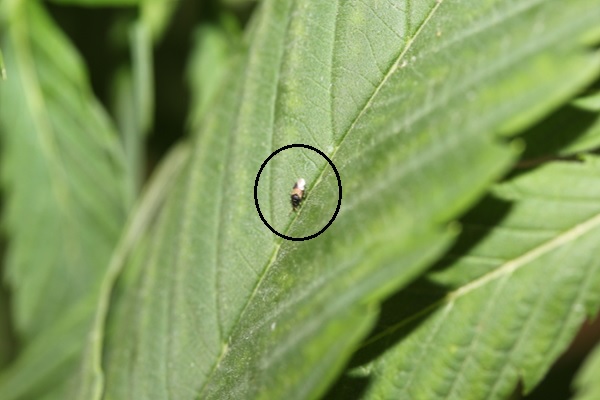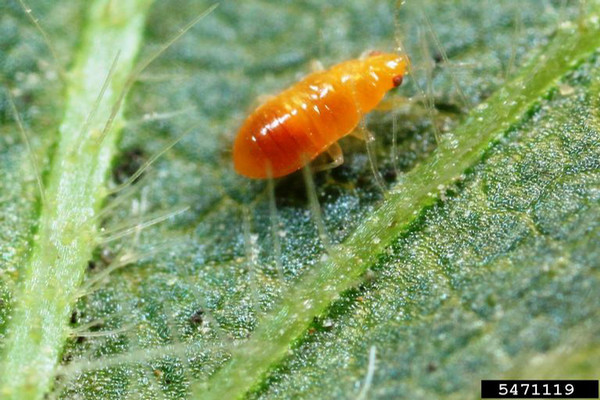Beneficial Insects
Common Beneficials:
- Long-legged Flies
- Lacewing Larvae
- Lady Beetles
- Minute Pirate bugs
Assassin Bugs
Also called ambush bugs or thread-legged bugs, there are many different kinds of these predatory insects that vary dramatically in their size and coloration. For example, some may be dark/drab colored while others are brightly colored, with black and orange or black and yellow color combinations. These insects have piercing-sucking mouthparts and attack many different pest insects, including aphids, caterpillars, whitefly nymphs, stink bugs and more! Some assassin bugs are large and will bite readily if handled. Adult assassin bugs are generally good fliers, while the immature nymphs do not have fully-developed wings and cannot fly away if disturbed.
Damsel Bug
Damsel bugs are small (0.35-1.1 cm long) pale-yellow to brown-colored predators that feed on soft-bodied insects, like aphids and caterpillars. They have piercing-sucking mouthparts, and the most common damsel bugs have well-developed wings in the adult stage and can fly or move quickly when disturbed.
Lacewing Larvae
Lacewing larvae are voracious predators of small, soft-bodied insects, like aphids.They have piercing-sucking mouthparts and look like miniature alligators, crawling along the surface of leaves and stems looking for prey. They are similar in appearance to lady beetle larvae, but are less colorful and lack the spiny appearance of lady beetle larvae. Adult lacewings are very different in appearance from the larvae. In addition to the larvae and adults, you may also find lacewing eggs on plants, which are very unique. The eggs are laid at the end of an eyelash-sized stalk that is attached to leaves or stems, so the egg appears to be floating above the surface of the leaf or stem it is deposited on.
Lady Beetles
These predatory beetles are well known to many, given their bright coloration and oval, convex body shape. Adult lady beetles are small (0.08-1 cm long) and both larvae and adults feed mainly on aphids, although they may also attack other small, soft-bodied insects, including scale insects, mites, mealybugs, and even insect eggs. Lady beetle larvae look like mini, spiny alligators with spots or bands and similar to adults, they are often brightly colored. Both larvae and adults crawl along plant stems and leaves searching for prey, and adults are good fliers.
Spiders
There are many different kinds of spiders found on agricultural plants. Some of the most common types of spiders observed on industrial hemp plants include jumping spiders (Family: Salticidae), crab/flower spiders (Family:Thomisidae), and harvestmen (Order: Opiliones). These spiders differ in their size, appearance, and foraging habits (active hunters versus sit-and-wait, ambushing hunters), but all are generalist predators that feed on a variety of different insects, including aphids, flies, plant bugs, and more.
Spine Soldier Bug
Spined soldier bugs are predatory stink bugs. There are many species of predatory stink bugs that differ in color and size, but all are beneficial predators of various pest insects as well as feeding on their eggs.
Minute Pirate Bugs
These predatory insects are small, sesame seed-sized true bugs that feed on soft-bodied insects, as well as plant pollen. Both adults and nymphs (immature stage) attack a variety of pest insects, including aphids, whitefly nymphs, and insect eggs. Nymphs lack wings, are dark-reddish in color and are very active, crawling around on plants in search of prey. Adults are black and white with wings and can fly readily from one plant to another. Minute pirate bugs are voracious predators despite their small size.
Predators AND Parasitoids (Wasps and Flies)
Insect parasitoids complete their entire life cycle by using the body of another insect. Parasitoids typically lay an egg on or inside the body of another insect, and once the egg hatches, the larva of the parasitoid feeds inside the prey insect, eventually killing it and emerging as a new adult parasitoid. Although parasitoids are very diverse and include many kinds of insects, most parasitoids are wasps and flies that range in size from tiny to easily visible to the naked eye. Parasitoid wasps and flies may be generalists, attacking many different insect prey, including aphids, whiteflies, caterpillars, and stink bugs, or they may be specialists that attack a specific family or species of aphid or caterpillar. You may not see the parasitoid that attacks pests on hemp, but you may see evidence of parasitoid activity as caterpillars or aphids that do not move and appear mummified or that have small exit holes, left behind by the new adult parasitoid that chewed its way out of the dead prey insect.
There are many different kinds of predatory flies that attack insects. Some flies are predatory in both the adult and larval stage, while others are only predatory in one life stage, either as adults or as larvae. Some predatory flies that are commonly observed on hemp includelong-legged flies (Family: Dolicopodidae), hover flies (Family: Syrphidae), and snipe flies (Family:Rhagionidae). Long-legged flies are small and often metallic-colored with large eyes and legs that appear longer than the body, although this is not always the case. Both adults and larvae are predatory, attacking and eating small, soft-bodied insects in the foliage or soil, respectively. Hover flies are very common, vary in size, and the adults are often mistaken for sweat bees because they are black and yellow bee mimics. As the name suggests, hover flies are known for their hovering flight habit around flowers, plants, and people. The adults are important pollinators, while hover fly larvae (also called syrphid larvae) are voracious predators of small, soft-bodied insects, including aphids. Snipe flies can vary a lot in appearance, but generally have a slender body form and long, stilt-like legs. Both adult and larval snipe flies are predatory and feed on other insects; however, some species are blood-feeding as adults.

